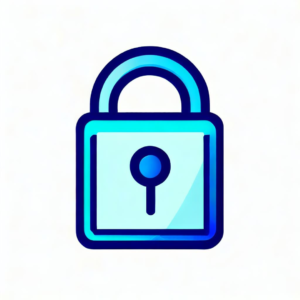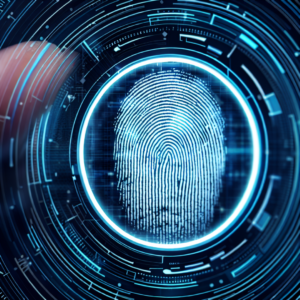Importance of Multi-Factor Authentication (MFA) in Cloud Access Security
Businesses around the globe are increasingly transitioning into the online realm, and the need for enhanced security measures becomes increasingly important. Cloud access security is crucial to prevent data breaches, hacking, and unauthorized access to sensitive information. One way to improve cloud access security is through the implementation of multi-factor authentication (MFA). This article will explore the importance of MFA in cloud access security, the need for its implementation, how to implement it, real-world applications, challenges and considerations, and future developments.

In recent years, cloud computing has gained widespread popularity among businesses of all sizes. Cloud computing provides a range of benefits, including cost savings, increased flexibility, and scalability. However, the cloud also poses significant security risks, particularly when it comes to cloud access security. As such, businesses need to adopt robust security measures to protect their data from unauthorized access, breaches, and other security threats.
Multi-factor authentication (MFA) is a security protocol that requires users to provide two or more forms of identification to access a system. MFA adds an additional layer of security to password-based authentication, making it more difficult for attackers to gain unauthorized access.
This article will explore the need for MFA in cloud access security, how to implement MFA, real-world applications of MFA, challenges and considerations, and future developments.
The Need for MFA in Cloud Access Security
Traditional password-based authentication is a common method of accessing cloud-based systems. However, it has significant shortcomings. Passwords are easily compromised, and once an attacker gains access to a password, they can use it to gain unauthorized access to sensitive data. Password-based authentication is also vulnerable to brute force attacks, where attackers use automated tools to try millions of password combinations until they find the correct one.
Recent data breaches, such as the Equifax data breach, demonstrate the need for robust cloud access security measures. In the Equifax breach, attackers gained access to the sensitive information of over 143 million people by exploiting a vulnerability in the company’s web application software. The attackers were able to gain access by exploiting weak authentication methods.
MFA provides an additional layer of security to password-based authentication, making it more difficult for attackers to gain unauthorized access. By requiring users to provide two or more forms of identification, MFA significantly reduces the risk of data breaches and unauthorized access.
Implementing MFA in cloud access Security
There are several types of MFA, including SMS-based authentication, mobile authentication, smart card authentication, and biometric authentication. Each type has its benefits and drawbacks, and businesses should choose the type of MFA that best suits their needs.

Implementing MFA in cloud access security involves several steps, including planning, selecting the right MFA solution, configuring the MFA solution, and training users on how to use the MFA solution.
To ensure maximum security, businesses should configure their MFA solution to require at least two forms of identification and use strong encryption to protect user data.
Real-world applications of MFA in cloud access security
One company that has successfully implemented MFA is Netflix. Netflix uses MFA to protect its cloud infrastructure and ensure only authorized employees can access sensitive data. By implementing MFA, Netflix has been able to prevent unauthorized access attempts and significantly reduce the risk of data breaches.
Another company that has successfully implemented MFA is Dropbox. Dropbox uses MFA to secure access to its cloud storage platform. By requiring users to provide a second form of identification, such as a fingerprint or a text message code, Dropbox has been able to prevent unauthorized access attempts and ensure that only authorized users can access their files.
Numerous studies have shown that MFA significantly improves cloud access security. According to a report by Microsoft, MFA can block over 99.9% of account compromise attacks. In comparison, accounts without MFA are 10 times more likely to be compromised.
MFA also reduces the impact of data breaches. In a study by the Ponemon Institute, companies that implemented MFA experienced an average cost savings of $1.7 million in the event of a data breach, compared to companies without MFA.
MFA can be adapted to suit different types of cloud access security scenarios. For example, MFA can be used to secure access to cloud applications, cloud storage, or even virtual machines. In addition, MFA can be adapted to suit different user types. For example, some users may prefer to use a physical token, such as a key fob, while others may prefer to use biometric authentication, such as facial recognition or fingerprint scanning.
Challenges and Considerations for MFA in cloud access security
Multi-factor authentication (MFA) is a critical component of cloud access security. It provides an additional layer of protection by requiring users to provide two or more forms of identification before accessing cloud resources. However, implementing and maintaining MFA in cloud environments can be challenging. Some of the common challenges include:
-
-
- User adoption: One of the biggest challenges is getting users to adopt MFA. Many users find it inconvenient to enter multiple identification forms and may resist the change.
- Integration with legacy systems: MFA can be difficult to integrate with legacy systems that do not support modern authentication methods.
- Maintenance and management: MFA requires ongoing maintenance and management, including the issuance and revocation of tokens and certificates.
- Cost: Implementing MFA can be costly, particularly for organizations with large numbers of users.
-
Despite the challenges, implementing MFA in cloud environments is critical for maintaining security. Here are some tips for overcoming the common challenges associated with MFA:
-
-
- Educate users: Providing education and training to users can help increase adoption and reduce resistance to MFA.
- Leverage cloud-based MFA solutions: Cloud-based MFA solutions can be easier to integrate and manage than on-premises solutions.
- Automate MFA management: Automation can help reduce the overhead associated with managing and maintaining MFA.
- Use risk-based MFA: Implementing risk-based MFA can help reduce the cost of MFA by only requiring additional authentication when the risk level is high.
-
As cloud adoption continues to grow, MFA will become even more critical for maintaining security. Future developments and improvements in MFA for cloud access security include:
-
-
- Biometric authentication: Biometric authentication, such as facial recognition and fingerprint scanning, will become more prevalent in cloud-based MFA solutions.
- Adaptive MFA: Adaptive MFA will become more common, allowing organizations to adjust the level of authentication required based on the user, device, and context.
- Standardization: Standardization of MFA methods and protocols will make it easier to integrate MFA into legacy systems.
- Simplification: MFA solutions will become more user-friendly, simplifying the authentication process and reducing user resistance.
-
Conclusion
In this article, we have discussed the challenges and considerations of implementing and maintaining multi-factor authentication (MFA) in cloud access security. We highlighted the common challenges that companies may face, such as user adoption, integration with legacy systems, maintenance and management, and cost. We also provided tips on how to overcome these challenges by educating users, leveraging cloud-based solutions, automating management, and using risk-based authentication. Lastly, we discussed future developments and improvements in MFA, including biometric authentication, adaptive MFA, standardization, and simplification.

In today’s digital age, security threats are becoming more sophisticated, and cloud access security is no exception. MFA provides an additional layer of protection that can significantly enhance cloud access security by requiring multiple forms of identification before granting access to sensitive data and resources. By implementing MFA, companies can mitigate the risk of data breaches, minimize the impact of cyber-attacks, and protect their reputation and credibility.
As the use of cloud services continues to grow, companies must prioritize the security of their cloud environments. MFA is a critical component of cloud access security and should be included in every company’s security strategy. Therefore, we urge companies to adopt MFA in their cloud access security protocols to protect their valuable data and resources from potential security breaches. By taking proactive measures to enhance their cloud access security, companies can ensure the trust of their customers and stakeholders and remain competitive in today’s digital marketplace.
Take the Next Step! Please call 866.421.9522 to schedule a meeting with one of our industry experts.
USAccess LLC
Copyright © 2023. All Rights Reserved
